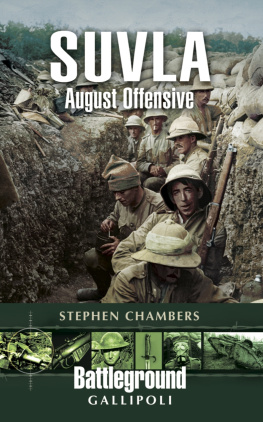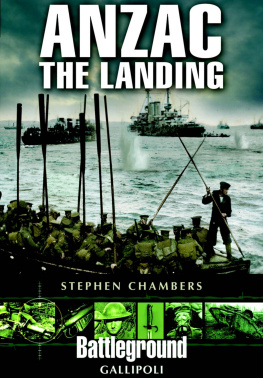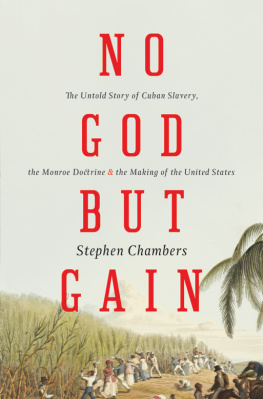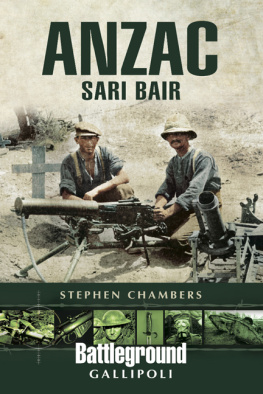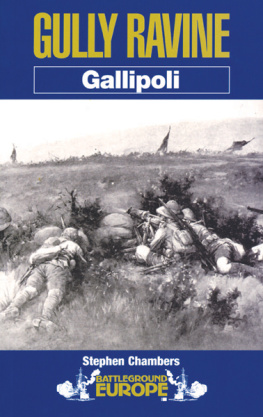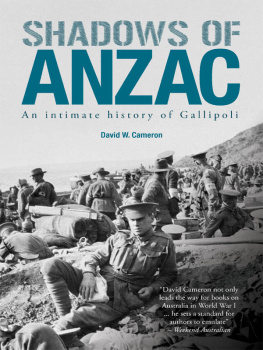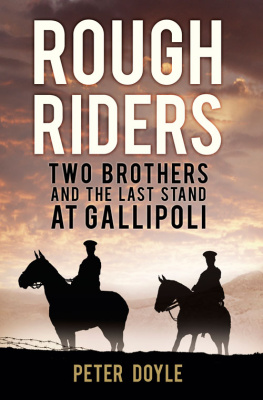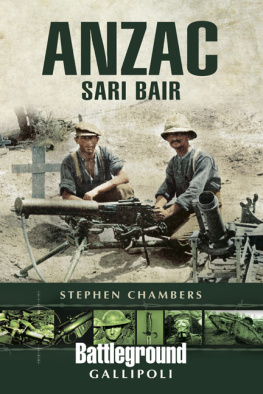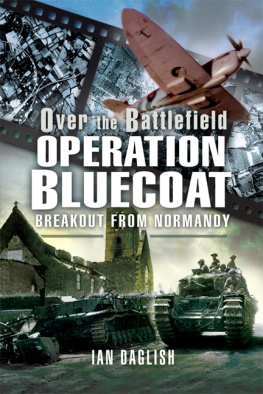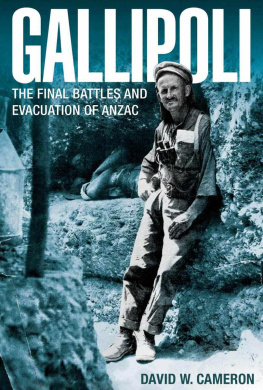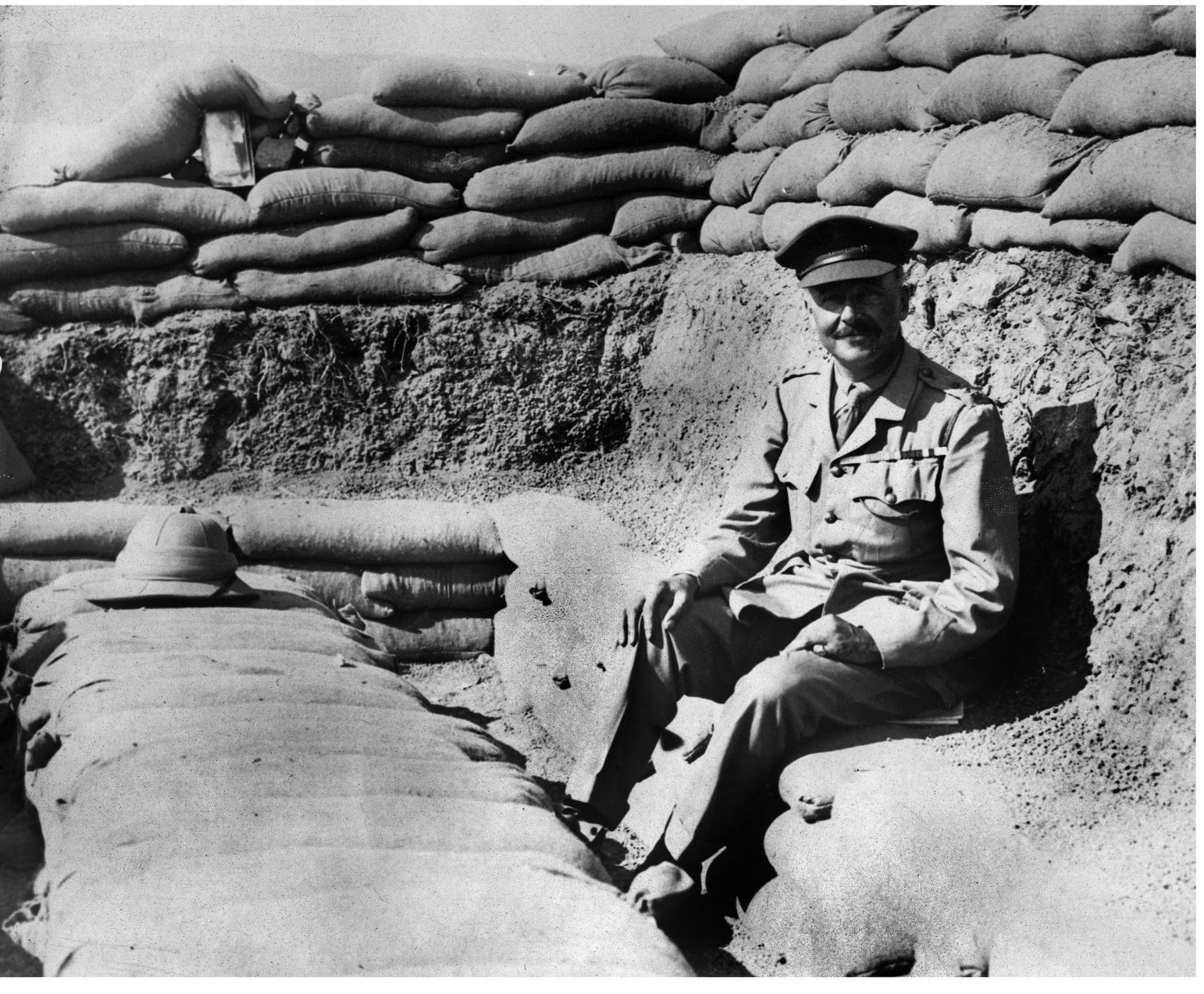ACKNOWLEDGEMENTS
Without the help of many individuals and organisations this book would not have been possible. Special thanks in the UK are due, in no particular order, to Peter Hart, IWM Oral Historian and military author extraordinaire , who has been tremendously helpful throughout the journey of this book. John Shephard, in providing so much help and information on the Dorset Yeomanry and the Scimitar Hill area, and also to Andrew French on helping with information on the Berkshire Yeomanry and Lieutenant Niven. Thanks is also due to David Empson for bringing to my attention a wealth of untapped local newspaper information about the Norfolk battalions, a resource that is rich with personal accounts and, of course Dick Rayner, whose excellent article The Sandringhams at Suvla Bay helped de-myth some of the legend. Both Michael Robson and Michael Pegum have also been of enormous help. The Gallipoli campaign can only truly be understood by treading the very ground that the men, from both sides of the trenches, had fought on, bled and died; a huge thanks therefore goes to both Guy Marner and Jon Saunders who have, on several occasions, accompanied me on battlefield trips to Gallipoli, keeping me sane, protected from the marauding dogs and suitably supplied with the local amber nectar. In Turkey thanks must go to the experts who live and breathe Gallipoli. Firstly two historians and authors: Haluk Oral, who has helped me see Gallipoli through Turkish eyes; and, Sahin Aldogan, who has been studying the campaign and walking the ground since 1965, and whose knowledge of the battlefield is second to none. Also in Turkey thanks need to go to Bill Sellars, local historian, journalist and Australian, for sacrificing his time to take me to some of the most inhospitable parts of the battlefield and to share not only his knowledge on the campaign but the odd beer as well. Also out in Gallipoli is Eric Goossens, who with zlem Gndz, run a perfect little hotel, tucked away in Kocadere; a perfect base for me whilst researching. And of course, by no means least, Nigel Cave, Series Editor, whose guidance along the way has kept me on the straight and narrow as always.
From individuals to organisations, museums, libraries, websites and the like, the list is almost endless but, to start, thanks need to go to the staff at the National Archives, Imperial War Museum, National Army Museum, Berkshire Yeomanry Museum and The Keep Military Museum. The tireless work performed by the Commonwealth War Graves Commission cannot go without mention in their caring for the British and Commonwealth war dead in Gallipoli, and all around the world. Also worth a mention is the Gallipoli Association, which since 1969 has been helping keep the memory alive, an association worth joining; a website worth visiting and a journal worth reading. The contribution from veterans, their descendants, and many professional and enthusiastic amateur military historians over the years has been enormous; a source of information I have well tapped over the years.
Sadly, the veterans have long since faded away, but they are are not forgotten; their stories continue to be told, and used here to give the human aspect of war. Contemporary material in the form of war diaries, divisional, regimental and the battalion histories have also been referenced. For example, the published diary of Sir Ian Hamilton and also Cecil Aspinall-Oglanders Official History are both a must read. I have also used many personal accounts in the form of letters and diaries as well as a large assortment of maps and photographs, many never published before. The originators of these must all be thanked, because without this material there would be no story to tell. With historical documents it is always difficult to trace all the copyright holders, so for any who have not been contacted, please accept my sincere apologies, and feel free to contact me if you feel it necessary. To all these people and any I have mistakenly forgotten to mention, please accept my sincere apologies and thanks.
Last, and by no means least, thanks to my long suffering wife Joanne, along with Lewis and Jess, who have sacrificed so much in allowing me space to pursue my passion for Gallipoli.
Stephen Chambers West Sussex and Suvla, 2010
BIBLIOGRAPHY
AND RECOMMENDED FURTHER READING
Bartlett, Ashmead, Despatches from the Dardanelles , (London: George Newnes, 1915).
Chambers S. J., Anzac The Landing, (Barnsley: Pen & Sword, 2008).
Denham, H. M., Dardanelles: A Midshipmans Diary , (London: Murray, 1981).
Erickson, E. J., Gallipoli: The Ottoman Campaign , (Barnsley: Pen & Sword, 2010).
Gallishaw, J., Trenching At Gallipoli , (New York: The Century Co., 1916).
Gillam, J. G., Gallipoli Diary , (London: Allen & Inwin, 1918).
Gnc, G., Aldogan, S., Gallipoli Battlefield Guide , (Istanbul: MB Books, 2008).
Hanna, H., The Pals At Suvla Bay ., (Dublin: Ponsonby Ltd, 1917).
Hargrave, J, The Suvla Bay Landing , (London: Macdonald 1964).
Hamilton, Sir. I., Gallipoli Diary , (London: Edward Arnold, 1920).
Hamilton, Sir. I., Ian Hamiltons Final Despatches , (London: George Newnes, 1916).
Hatton, S. F., Yarn of a Yeoman , (London: Hutchinson, 1930).
Herbert, A., Mons, Anzac and Kut , (London: Hutchinson, 1919).
Holts, T & V., Major & Mrs Holts Battlefield Guide: Gallipoli , (Barnsley: P&S, 2000).
James, R., Rhodes, Gallipoli , (London: Pan Books Ltd, 1984).
The Earl of Granard, 5 Royal Irish Regiment in his Lala Baba dugout.
Jones, Rev D., The Diary Of A Padre At Suvla Bay , (London: The Faith Press, 1917).
Mackenzie, Gallipoli Memories , (London: Cassell and Company Ltd, 1929).
McCrery, N., All The Kings Men , (London: Simon & Schuster 1992).
Mortlock, M. J., The Landings at Suvla Bay , (North Carolina: McFarland & Co, 2006).
North, J., Gallipoli: The Fading Vision , (London: 1936).
Oglander, Aspinall-, Military Operations Gallipoli , (London: Heinemann , 1929-32).
Orr, P., Field of Bones: An Irish Division on Gallipoli , (Dublin: Lilliput, 2006).
Pemberton, T. J., Gallipoli To-Day , (London: 1926).
Priestman, E. Y., With A B-P Scout In Gallipoli , (New York: Routledge & Sons, 1917).
Prior, R., Gallipoli: The End of The Myth , (London: Yales, 2009).
Rayner, R., The Sandringhams at Suvla Bay (WFA, Reading 2000)
Roe, E., Diary of an Old Contemptible , (Barnsley: Pen & Sword, 2004).
Snelling, S., VCs of the First World War Gallipoli , (Stroud: Sutton Publishing, 1995).
Steel, N and Hart P., Defeat at Gallipoli , (London: Macmillan, 1994).
Still, J., A Prisoner in Turkey , (London: John Lane, 1920).
Taylor, P., Cupper P., Gallipoli: A Battlefield Guide , (Kangaroo Press, 1989).
Teichman, O., The Diary Of A Yeomanry M.O. , (London: Fisher Unwin, 1921).
Travers, T., Gallipoli 1915 , (Stroud: Tempus, 2001).
Walker, R., To What End Did They Die: Officers Died at Gallipoli , (Worcester, 1985).
Wedgwood-Benn, W., In the Side Shows , (London: Hodder & Stoughton, 1919).
Wilkinson, N., The Dardanelles , (London: Longmans, Green & Co. 1916).
SUVLA ORDER OF BATTLE AUGUST 1915
IX CORPS
Lieutenant General Hon. Sir F. W. Stopford
10TH (IRISH) DIVISION
Major General Sir B. T. Mahon
29 Brigade (Attached Anzac Corps)
30 Brigade: Brigadier General L. L. Nicol

